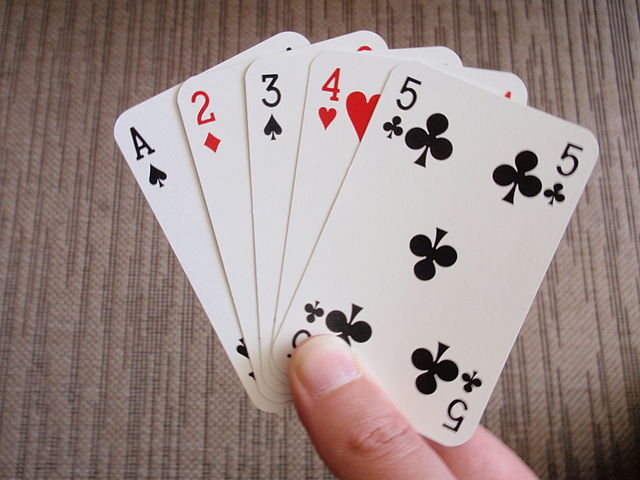An ace is a playing card, die or domino with a single pip. In the standard French deck, an ace has a single suit symbol located in the middle of the card, sometimes large and decorated, especially in the case of the ace of spades. This embellishment on the ace of spades started when King James VI of Scotland and I of England required an insignia of the printing house to be printed on the ace of spades. This insignia was necessary for identifying the printing house and stamping it as having paid the new stamp tax. Although this requirement was abolished in 1960, the tradition has been kept by many card makers. In other countries the stamp and embellishments are usually found on ace cards; clubs in France, diamonds in Russia, and hearts in Genoa because they have the most blank space.
Ace of batons ("bastos") from a Spanish deck
Sau (Vienna, 1573)
A playing card is a piece of specially prepared card stock, heavy paper, thin cardboard, plastic-coated paper, cotton-paper blend, or thin plastic that is marked with distinguishing motifs. Often the front (face) and back of each card has a finish to make handling easier. They are most commonly used for playing card games, and are also used in magic tricks, cardistry, card throwing, and card houses; cards may also be collected. Playing cards are typically palm-sized for convenient handling, and usually are sold together in a set as a deck of cards or pack of cards.
Hand of French-suited cards
Tarot playing cards from Austria
Suit of Bells from a Bavarian pack
Chinese printed playing card c. 1400 AD found near Turpan






